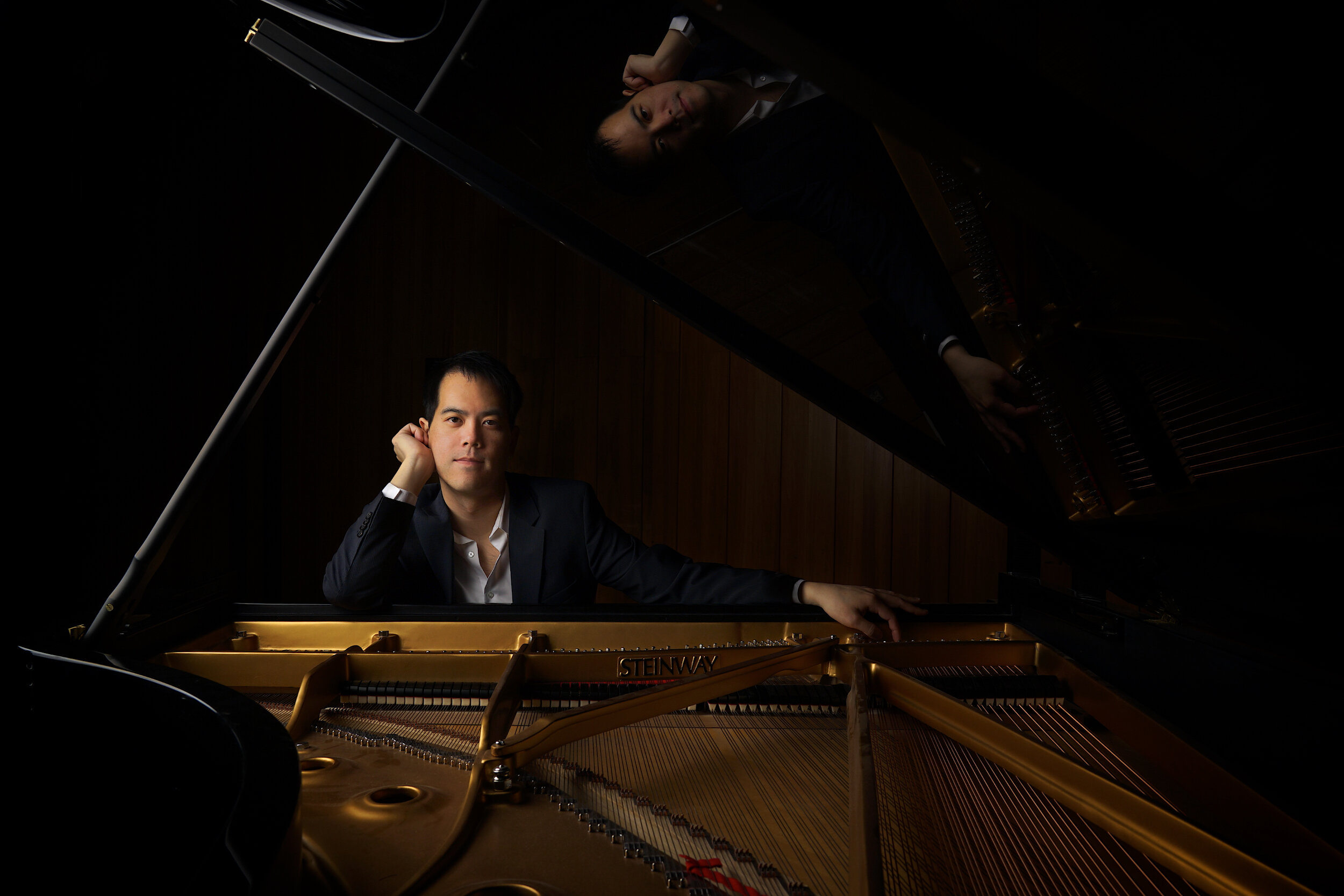What Historical Recordings Teach Us, Part 1
Elgar recording in 1914, Photo courtesy of CHARM | Classical Post
In the last year, several prominent artists released albums highlighting their life-long journeys through an endlessly vast musical literature. Deutsche Grammophon released its long-awaited first solo album of acclaimed pianist Sergei Babayan, coinciding with the release of a duo album with his superstar student Daniil Trifonov. Two younger artists also made news this year. Pianist Jonathan Biss released his final volume of the Beethoven Piano Sonatas, and pianist Adam Golka is soon to release his first volume of the same monumental cycle. In the orchestral world, the San Francisco Symphony provided MTT’s Keeping Score to virtual audiences free of charge during the closing of concert halls worldwide. The Tetzlaff Quartet’s new Beethoven album was also released on the Ondine label to great critical acclaim.
21st-century audiences reap enormous benefits of current technology when it comes to recordings, and never more so as during the COVID-19 pandemic, when public concerts have been shelved for safety concerns. Modern audiences also enjoy nearly limitless access to recordings from decades and even a century ago through YouTube, Spotify, and various archival projects, such as those of Allan Evans for Arbiter Records and Ward Marston for Marston Records. Over a hundred years of technological advances have created a world of difference in recording quality, yet today’s musicians are still encouraged to explore the mesmerizing performances of Cortot, Kreisler, and Casals, and even earlier performers such as Rachmaninoff, Leschetizky, and Toscanini. Beneficiaries of modern recording technology may very well ask, why ought one to listen to historical recordings with seemingly shoddy audio quality, narrow or distorted sound, and less accurate playing?
Windows Into The Past
Music lovers will never hear recordings of Bach, Beethoven, Chopin, and the like (and Brahms, unfortunately, unless a particular snippet is ever fully cleaned up). Even the most adroit handling of available context by the greatest scholars (or not) will only yield background information and guidelines rather than reproducible performance habits. However, early recording technology managed to capture performances by many great composers, and the results are truly ear-opening.
Many familiar composers such as Mahler, Grieg, Debussy, and Gershwin all lived during the earliest days of sound recording, and all of them produced recordings. Even though piano roll technology is subject to variables of machine efficiency and upkeep, this method of reproducing performances contributed to the preservation of much familiar music. For any serious musician and devoted aficionado, and exploration of these recordings is a must. After all, these recordings are from the sources themselves!
The Past Is Closer Than We Think
The following is a list of several familiar composers who made piano roll recordings in the first quarter of the 20th century. A quick search on YouTube reveals that they are readily available to hear again!
Gustav Mahler (1860-1911)
Edvard Grieg (1843-1907)
Camille Saint-Saëns (1835-1921)
Gabriel Faure (1845-1924)
Claude Debussy (1862-1918)
Richard Strauss (1864-1949)
Alexander Scriabin (1872-1915)
Scott Joplin (c. 1868-1917)
George Gershwin (1898-1937)
During the popularity of piano rolls, various records came into being (78s, LPs, etc) and subsequently various recordings by many more composers. Sergei Rachmaninoff most notably recorded enough of his own music and that of others to fill what is now 10 CDs’ worth of audio. Ward Marston beautifully describes his encounter with a previously undiscovered private recording of Rachmaninoff playing passages from his Symphonic Dances, Op. 45: “What you learn is how Rachmaninoff wanted the piece to be played. There's a tremendous amount of elasticity in his performance, tempi that are accelerating or decelerating and also phrasing that crescendos and diminuendos and that sort of thing. And it's also fascinating to learn…what melodic parts Rachmaninoff wanted to be to bring out." Such are common reactions at hearing composers playing their own music. Other recordings from Soviet composers Prokofiev and Shostakovich (in single albums and in collections) later in the 20th century also reveal the inevitable stamp of a composer’s ownership. Bartok is another famous example of an Eastern European composer who left several valuable sessions worth of audio material. He also benefited from early recording technology in that he personally preserved numerous examples on wax cylinders of Hungarian folk music via Edison phonograph. Of course, one cannot forget recordings of Stravinsky’s own conducting of many of his works, including several of his famous ballets. Several novelties in early 20th-century recording also exist, such as Sibelius’s only known recording of his own music.
Jean Sibelius conducts "Andante Festivo" in 1939
Old Wine In New Bottles
The search for musical identity, or discovering one’s “own voice,” dogs most developing artists who are encouraged to seek inspiration in everything from literature to nature to psychology to religion. (The results have paid off, by the way. Pianist Charles Rosen wrote for the New York Review of Books, Helene Grimaud advocates for wolf conservation, pianist Claudio Arrau penned his experience in psychoanalysis, and the great Franz Liszt took up lay orders late in life!) While all these activities prove invaluable for artistic development and wellness, a sonic, musical identity may be closer than one thinks. By turning to the past, a musician discovers interpretive risks worth taking, options worth exploring, and decisions worth trying. The late Leon Fleisher admonished that developing a thousand different sounds requires a thousand ways of creating them. In the course of learning a work of music, what better place to begin looking for aural inspiration than in the recordings of those closest to the composers, or even the composers themselves? The search for inspiration in modern performance will find a musical oasis in the unfettered musical expression of the earliest recordings.
In wrapping up the first part of this brief survey, a few common features of historical recordings stand out. One hears enormous variety in timing of rubato (or tempo flexibility), dynamic contrasts, phrasing, and tone coloring, all facets of performance that deserve their own book(!). Metronomic performances did not exist, even though the metronome has existed for over 200 years. The printed score was not binding to composers, who exercised ownership over their work. At the same time, taking liberties with the printed score, an act of utter blasphemy by many of today’s standards of performance, commonly occurred in the performances of works from decades and centuries before. Note, for instance, Rachmaninoff’s recording of Chopin’s Piano Sonata No. 2, particularly the famous “Funeral March.” Extra notes are added, dynamics are changed, and the overall effect of the movement is transformed when the first thematic area returns!
Rachmaninoff Plays Chopin Sonata No 2
Perhaps the definition of “interpretation” has changed over the course of the improvements of recording technology. Part 2 will examine this issue a little further through the recordings of composers’ students and collaborators. In the meantime, dive into the recordings above and listen to blasts from the past!











